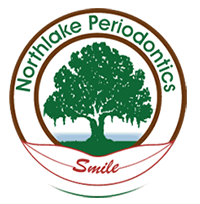OSSEOUS SURGERY
Osseous surgery refers to a number of different surgeries aimed at gaining access to the tooth roots to remove tartar and disease causing bacteria. The most common of these is utilizing the Periolase MVP 7 laser. This can also be achieved via traditional flap surgery and Gingivectomy.
Goals of Osseous Surgery
Osseous surgery is used to reshape deformities and remove pockets in the alveolar bone surrounding the teeth. It is a common necessity in effective treatment of more advanced periodontal disease. The ultimate goal of osseous surgery is to reduce or eliminate the periodontal pockets that cause periodontal disease. Despite the word “surgery” the procedure is reported to feel more like a thorough cleaning.
The specific goals of surgery include:
- Reducing Bacterial Spread:
Bacteria from the mouth spread throughout the body and cause other life threatening conditions such as heart and respiratory disease. Removing deep tartar and bacteria can help reduce the risk of bacteria spreading. - Preventing Bone Loss:
The immune system’s inflammatory response prompted by periodontal bacteria can lead to bone loss in the jaw region, and cause teeth to fall out. Osseous surgery seeks to stop periodontal disease before it progresses to this level. - Enhancing the Smile:
Mouths plagued with periodontal disease are often malodorous and unsightly. Brown gums, rotting teeth, and ridge indentations can leave a person feeling depressed and too self-conscious to smile. Fortunately, osseous surgery can help reduce bacteria and disease, eliminating bad breath and restore your mouth to its former radiance, while restoring confidence at the same time. - Facilitating Home Care:
As the gum pocket deepens, it becomes nearly impossible to brush and floss adequately. Osseous surgery reduces pocket size, making it easier to effectively brush and floss, and prevent further periodontal disease.
Osseous surgery refers to a number of different surgeries aimed at gaining access to the tooth roots to remove tartar and disease causing bacteria. The most common of these is utilizing the Periolase MVP 7 laser. This can also be achieved via traditional flap surgery and Gingivectomy.
Goals of Osseous Surgery
Osseous surgery is used to reshape deformities and remove pockets in the alveolar bone surrounding the teeth. It is a common necessity in effective treatment of more advanced periodontal disease. The ultimate goal of osseous surgery is to reduce or eliminate the periodontal pockets that cause periodontal disease. Despite the word “surgery” the procedure is reported to feel more like a thorough cleaning.
The specific goals of surgery include:
- Reducing Bacterial Spread:
Bacteria from the mouth spread throughout the body and cause other life threatening conditions such as heart and respiratory disease. Removing deep tartar and bacteria can help reduce the risk of bacteria spreading. - Preventing Bone Loss:
The immune system’s inflammatory response prompted by periodontal bacteria can lead to bone loss in the jaw region, and cause teeth to fall out. Osseous surgery seeks to stop periodontal disease before it progresses to this level. - Enhancing the Smile:
Mouths plagued with periodontal disease are often malodorous and unsightly. Brown gums, rotting teeth, and ridge indentations can leave a person feeling depressed and too self-conscious to smile. Fortunately, osseous surgery can help reduce bacteria and disease, eliminating bad breath and restore your mouth to its former radiance, while restoring confidence at the same time. - Facilitating Home Care:
As the gum pocket deepens, it becomes nearly impossible to brush and floss adequately. Osseous surgery reduces pocket size, making it easier to effectively brush and floss, and prevent further periodontal disease.
What does the procedure entail?
A local anesthetic will be used to numb the area prior to surgery. First, Dr. LaSalle, using the Periolase MVP 7, will go around each tooth of the affected area to release the gum tissue from the bone. This allows access to the bone and roots of the teeth. After the roots have been thoroughly cleaned, bone grafting may also be necessary to fill in large defects.
Hemostasis will be achieved utilizing the Periolase MVP 7. Pain medicine and mouth rinses containing chlorhexidine are generally prescribed following the surgery.
